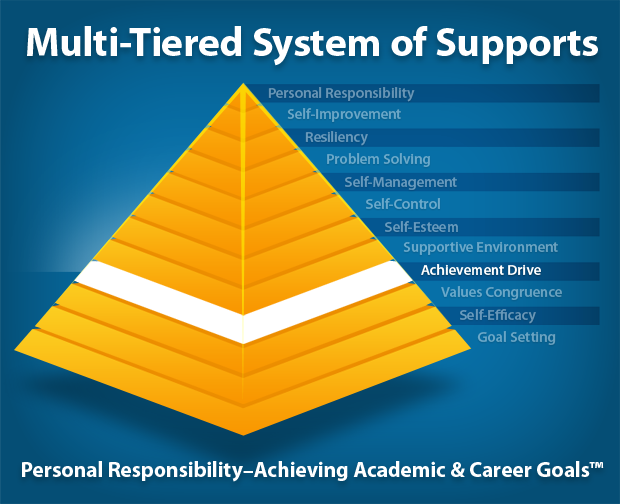
The focus of this blog is on Achievement Drive, the fourth scale of twelve in our Personal Responsibility Map, which is the core assessment in our Personal Responsibility—Achieving Academic and Career Goals program.
Achievement Drive is the level of desire, effort and commitment given to individual goals. Let’s take a look at the four major parts used in this definition of Achievement Drive. They are desire, effort, commitment and goals.
Desire, Effort, Commitment and Goals
Let’s begin with desire. Desire is to long for, to hope, or to wish to achieve something. When desire becomes strong enough, desire turns into goals. A goal is like a target at which to shoot. Goals are an end that one works to get.
Effort is the action needed to get something that you desire. It takes lots of effort to achieve a goal!
Commitment is a deeply held belief that, once you have accepted a challenge or have set a goal, it is your duty to work on that challenge until you meet it.
Now let’s put all four of these words into action. Your desire is something for which you wish or work for. Your goals are the map that you use to achieve what you desire. Your effort is the amount of energy you use to achieve your desire, and, finally, your commitment helps you to continue your efforts to achieve what you desire.
MTSS and Achievement Drive
Multi-Tiered System of Supports, or MTSS, is a term used to describe an evidence-based model of schooling that uses data-based problem solving to integrate academic and behavioral instruction and intervention (Florida’s MTSS Project). This definition brings together the worlds of academic instruction and behavioral intervention.
In the MTSS model, helping students learn how to set and achieve goals is a core skill. Without the ability to see a reason to learn through goal setting, educators must use a decades-old method to get their students to learn.
Because I Said So
Perhaps the most popular method of attempting to get students to learn is the Because-I-Said-So method. It worked in the past, so it should work now; however with this generation of stimulus/response students, it simply does NOT work. So how do we get students motivated to learn and achieve? Teach them how to set and achieve goals—THEIR goals, not yours.

